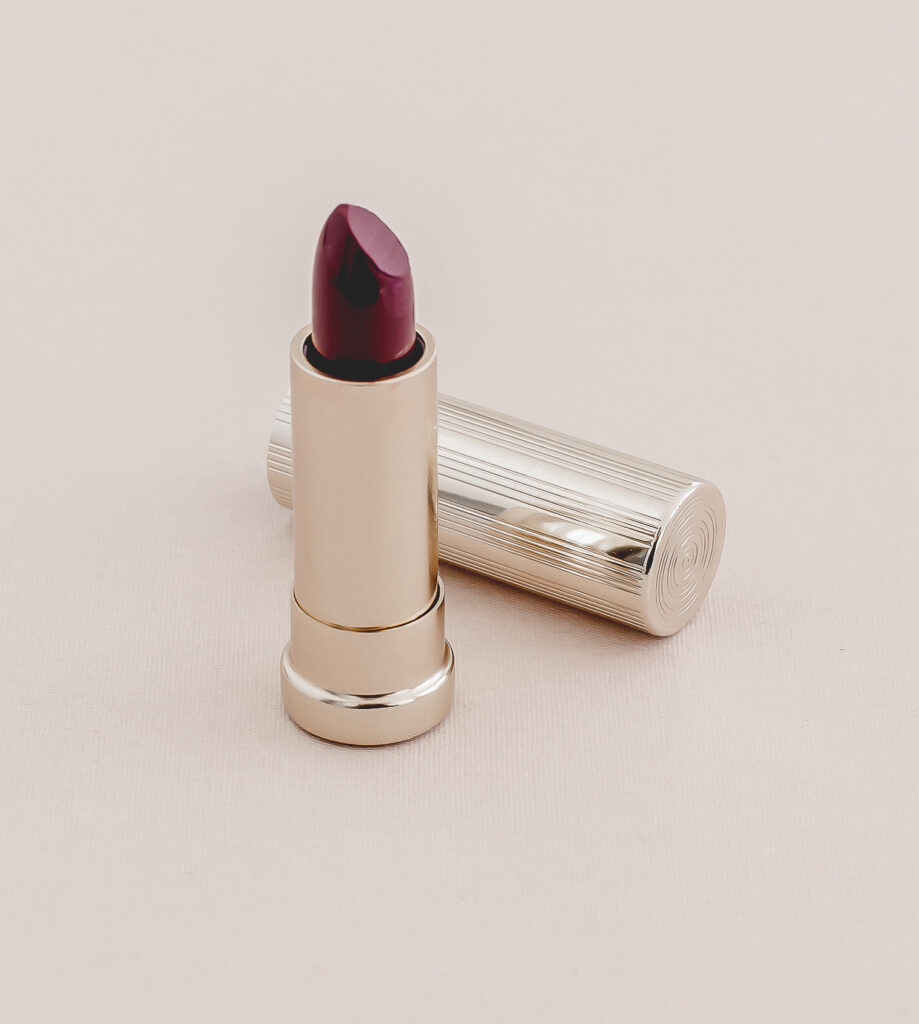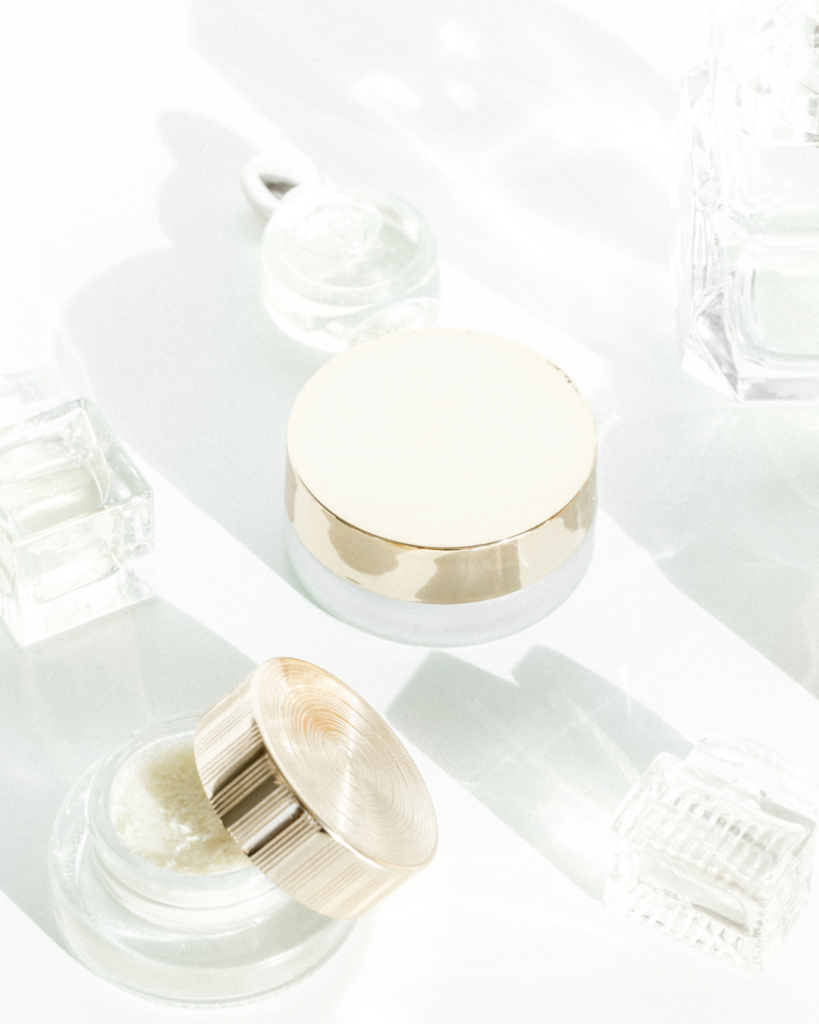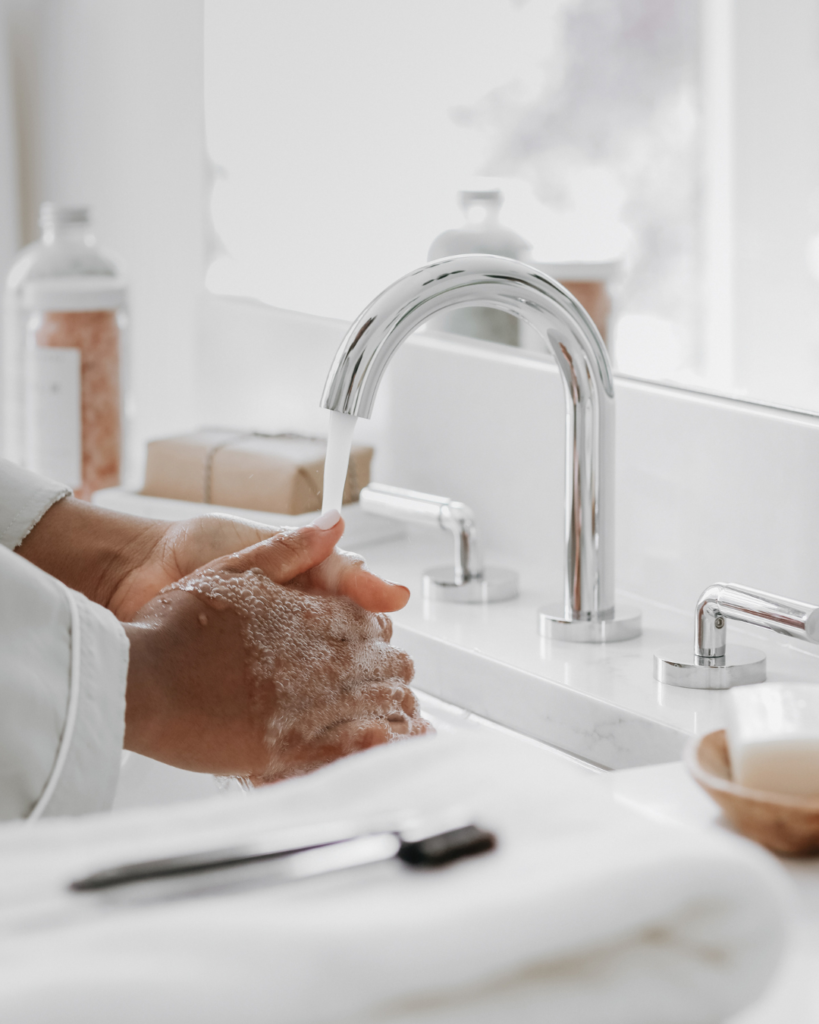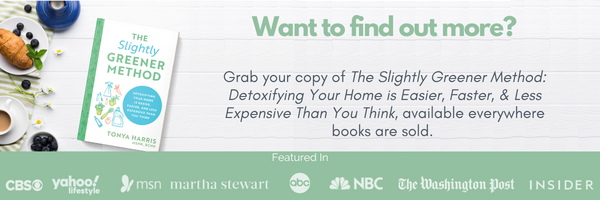We buy skincare products in hopes that they will take care of our skin, preventing those pesky wrinkles and fine lines, but have you ever imagined that there are ingredients commonly found in skincare that could secretly be aging your skin?
Let’s dig into some ingredients that not only have some toxic health effects that are on my Top 10 List of Ingredients to avoid, but that also come with some effects that contribute to aging of the skin!
3 Ingredients that are Secretly Aging Your Skin
These are just 3 ingredients that I believe should be avoided, but there are definitely more. But these are 3 that are pretty commonly found in many cosmetics and skincare, so we’ll stick with these today. If you want to discover more, I have my list top 10 ingredients to avoid in my book, The Slightly Greener Method, along with a long list of safer skincare and makeup brands.
But for now let’s get into the 3 surprising skincare ingredients that are secretly aging your skin!
Mineral Oil
Whether or not mineral oil contributes to accelerated skin aging is still a hot topic for debate, but I think that more signs point to the fact that because of it’s comedogenic (pore-clogging) nature, it could. Not to mention the potential toxicity of it.
Mineral oil is added to cosmetics for skin softening and moisturizing and is used in everything from creams and lotions to eye shadow, lip gloss, hair  products, lipstick, blush, concealer, lotions, and baby oil.
products, lipstick, blush, concealer, lotions, and baby oil.
One concern is that mineral oil is comedogenic, which means that it can clog pores, leading to acne and other skin concerns.
The way it works is by forming a physical barrier to reduce moisture loss, but that also means it can inhibit the skin’s oil production. But when the skin’s surface is blocked, sebum (the oily substance that keeps the skin from drying out) can’t be excreted so it accumulates in the pore. This tricks the skin into thinking that enough sebum has been produced, so it reduces its natural oil production, resulting in dry skin. This barrier can also slow cell turnover and prevent the release of toxins through the skin.
How to Avoid Mineral Oil
Look for any of these names on the label:
- Paraffin oil, liquid paraffin, paraffinum liquidum, liquid petroleum, petroleum oil, petrolatum, petrolatum liquid, or white oil.
Basically, look for anything that says petroleum, petrolatum, or paraffin.
Fragrance
Next up is fragrance, and I feel like I talk a lot about this one! Fragrance is added to skin care and personal care products and cosmetics to give the product a nice scent, and it is also sometimes added to cover up the scent of other ingredients.
But fragrance – that one word on the label – can be made up of hundreds of chemicals, which can be hormone-disrupting, cancer-causing, allergenic, and/or toxic to a variety of body systems, amont other health effects. And the individual ingredients that make up a fragrance don’t have to be listed on an ingredient label, because the formula is considered to be proprietary.
 Fragrance isn’t just found in things like air fresheners and perfumes – they’re also added to skincare and beauty products to make the products smell good.
Fragrance isn’t just found in things like air fresheners and perfumes – they’re also added to skincare and beauty products to make the products smell good.
You can find it in many personal care products, cosmetics, shampoos, hair spray, body lotions, eye shadow, lipstick and lip gloss, blush, deodorants, and items such as baby shampoo and baby wipes, and even in cleaning products.
Synthetic fragrances in skincare and cosmetic products can potentially contribute to accelerated skin aging, maybe not in a direct way like sunlight or smoking can, but because of it’s irritating and allergenic properties. Here’s how synthetic fragrances could have an impact on skin aging:
Synthetic fragrances are among the most common causes of skin irritation and allergic reactions – it has even been named Allergen of the Year! But these irritating and allergic reactions can cause continual inflammation that can lead to the breakdown of collagen and elastin in the skin, which are important in maintaining skin’s elasticity and firmness. Over time, this breakdown can contribute to the development of fine lines and wrinkles.
Fragrance as a Skin Sensitizer
Some fragrance ingredients are skin sensitizers, meaning that they can cause an allergic response in certain people in whom it triggers an immune response. Allergic contact dermatitis is an example of this. Repeated exposure to skin sensitizing ingredients can lead to these reactions, and a 2018 study found cosmetics like lipstick, eye shadows, and skincare that contained skin-senstizing fragrance chemicals were more likely to cause a reaction with daily or frequent use.
Sensitized skin is more prone to redness, swelling, and irritation, which can disrupt the skin’s protective, which in the long run can lead to dryness and make the skin more vulnerable to damage.
Fragrance and Photosensitivity
Certain fragrance components can react when exposed to sunlight, leading the skin to become more photosensitive, meaning prone to sunburn or rash when exposed to sunlight. Ingredients like retinols, and glycolic acid or benzoyl peroxide can also make the skin more susceptible to the sun’s damaging effects.
Fragrance is one of my top ingredients to avoid, not only for the effects it can have on skin, but also for the health effects it can have, so I believe everyone should avoid it as much as possible, but if you have sensitive skin or existing skin conditions definitely beware of fragrance in your products.
How to Avoid Fragrance
Look for these terms on the label:
- Fragrance or Parfum
Sodium Lauryl Sulfate
Sodium lauryl sulfate (SLS) is a surfactant commonly used in a wide range of personal care products, including liquid soaps, body wash, shampoos, and toothpastes, for its cleansing properties and ability to create a lather and foam (which is why you can also find it in many cleaning products). 
SLS is a strong skin irritant and is sometimes used in lab testing as a skin irritant for studies when an intentionally irritating agent is needed to test the effectiveness of products intended to heal skin.
This irritation can strip the skin of its natural oils and compromise the skin’s protective barri
er, leading to dryness and irritation. A study on seven volunteers a period of just over 3 months, found regular contact caused irritation, such as dryness, reddening of the skin, and elevated transepidermal water loss (water loss through the skin) and these irritation effects subsided once the skin was no longer exposed to SLS.
Over time this irritation can also lead to inflammation, which is known to break down collagen and elastin fibers in the skin leading to an increase in fine lines and wrinkles due to the loss of moisture and elasticity in the skin.
This is an ingredient you won’t really find on a leave-in product like a moisturizer, but it’s in many rinse-off products like liquid soap and shampoos.
Sodium Lauryl Sulfate and Hair Loss
And while we’re mentioning shampoo, this part isn’t about aging skin – it’s about hair breakage. I know I mentioned in a previous podcast episode about how I’ve been using different things to combat my hair loss, but thought I’d mention it here, too. SLS may also play a role in hair loss or thinning, because it can be so irritating to skin, improper rinsing of an SLS-containing shampoo can corrode the hair follicle, which can leading to hair loss and/or slower hair growth.
And because it can also be very drying to hair, it can contribute to hair breakage – also potentially leading to hair loss. And if hair loss is something you’re struggling with, check out episode 11 of The Slightly Greener Life podcast!
How to Avoid Sodium Lauryl Sulfate:
Look for these terms on the label:
- Sodium Lauryl Sulfate
- Sodium Laureth Sulfate – This is a related ingredient I recommend avoiding. SLS becomes Sodium Laureth Sulfate through a process called ethoxylation, which uses the cancer-causing ingredient ethylene oxide to convert SLS to Sodium Laureth Sulfate, which is a less-irritating chemical, but because of this manufacturing process, can be contaminated with the potentially cancer-causing 1,4 dioxane. Listen to this podcast episode to learn more about 1,4 dioxane, and why it won’t be listed on product labels.
Why We Don’t Need as Many Products as We Think
These 3 ingredients are not necessarily a direct cause of accelerated skin aging, but they all have the potential to irritate and dry out the skin, along with compromising the skin’s natural barrier function, which can contribute to aging.
And anything that dries out the skin can also magnify the appearance of wrinkles and fine lines – no thank you! I’m 48 – well for 2 more months anyway – and I’m very particular about my skin care! I use things as close to nature as possible, and I don’t use a ton of products.
A lot of marketing would have you believe that you need a cleanser, a toner, a day cream, a night cream, an eye cream, a neck cream, not to mention serums! Whoooo that is A LOT. A lot of money and a lot of products to keep up on. And a lot more than we need. In a lot of cases, it’s just clever marketing that we need that many products. Most of the time, it seems like we need more skincare to undo the effects of ingredients like these, but most skincare contain these ingredients, and more, so it’s kind of a vicious cycle.
Healthier Skincare Alternatives
As far as some of my favorite skincare that doesn’t contain any of my top 10 ingredients to avoid, I love Chanla Chau Cosmetics skincare, Alitura, and Green Envee. Again, there are quite a few listed in my book. I’m not an affiliate of any of these products, they’re just products that I have used and love!

